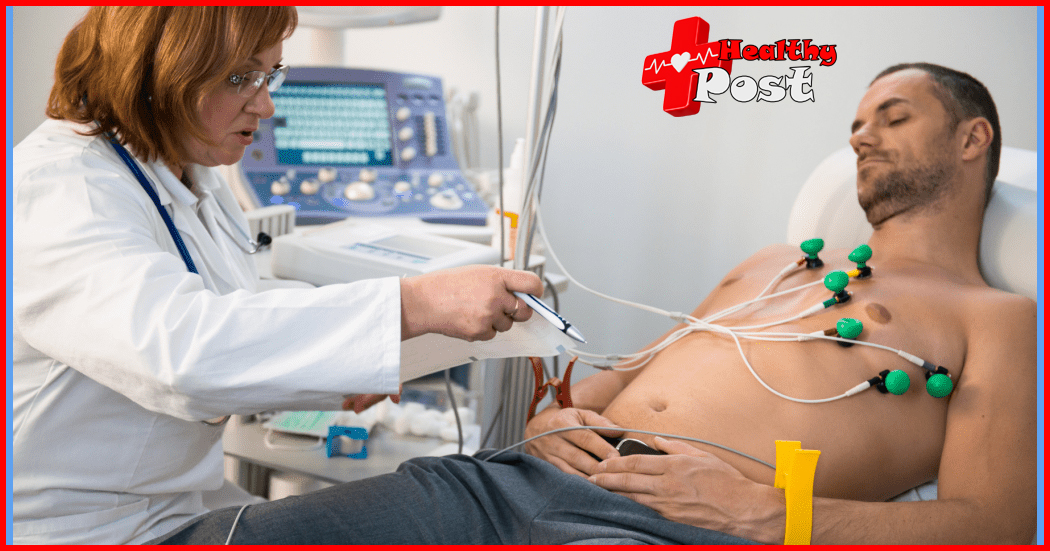
Electrocardiogram (ECG) is abnormal in examination, what to do?
Many people panic when they find sinus arrhythmia, abnormal ECG, T waves, etc. during an electrocardiogram, thinking they have a heart disease.
The electrocardiogram has made great contributions to people’s understanding of the heart and the diagnosis of heart disease. But does an abnormality in the electrocardiogram mean that you have a heart disease? In fact, this is not necessarily the case. It needs to be interpreted on a case-by-case basis.

1. Sinus arrhythmia
Most people know that the heartbeat should be regular and regular, so when they hear “irregular heartbeat”, many people think it is abnormal ecg. But often doctors say: “No need for treatment.” Why is this?
Sinus arrhythmia is common in young children, young people and the elderly. Sinus arrhythmia is characterized by irregular heartbeats and can be divided into two types: normal physiological and pathological. The former is common in healthy people who are overworked, emotionally agitated, smoke and drink heavily, etc. The latter can be seen in various organic heart diseases such as coronary heart disease, myocarditis, cardiomyopathy, rheumatic heart disease, etc., with potential risks of cardiac accidents.

“Sinus arrhythmia generally does not require special treatment for those with no symptoms, just observation and follow-up.” If your heartbeat suddenly accelerates, palpitation becomes dark, and attacks occur frequently during exercise, it is recommended to do dynamic electrocardiography and cardiac echocardiography. Check and determine whether further treatment is necessary based on the test results.
2. Sinus tachycardia
Generally speaking, in a calm state, a normal person’s heart rate should be between 60 and 100 beats per minute. Tachycardia is easy to understand. It means the heart beats too fast. Heart rate is also called heart rate (don’t confuse it with heart rhythm). When the heart rate exceeds 100 beats/minute, it is sinus tachycardia. The symptom is an obvious feeling of panic, but this condition is mostly physiological and transient. It mainly occurs under drinking, physical activity, emotional excitement, etc., and generally does not require treatment.

However, it should be noted that if unexplained sinus tachycardia occurs, it is likely to be caused by heart disease, fever, anemia, pain, hyperthyroidism, and certain drugs.
3. Sinus bradycardia
A heart rate below 60 beats/minute is sinus bradycardia, which means the heartbeat is too slow. People who do regular physical exercise and engage in strenuous physical labor need not worry. This is a normal phenomenon. Sinus bradycardia can also be caused under the influence of certain diseases and certain drugs. Mild bradycardia will not affect your health. If the heart rate is lower than 50 beats/min, it is severe bradycardia, and you need to be vigilant.
4. T wave changes
If your electrocardiogram report shows the conclusion of “non-specific T wave changes”, don’t worry. This abnormality is mostly caused by emotional anxiety and rapid heartbeat, and has no important clinical significance.
5. ST changes
Different from T wave, “ST changes” have very important clinical significance and require great attention. Its appearance means that you may have myocardial ischemia, and it also indicates diseases such as angina pectoris and myocardial infarction. In addition, cardiomyopathy, electrolyte disorders, hypertension and heart disease can also cause “ST changes”.
6. Bundle branch block
“Bundle branch” is the conduction pathway after the cardiac electrical impulse enters the ventricle, and is divided into left and right bundle branches. Right bundle branch block is the most common, and block is divided into complete and incomplete. Understanding the cause behind bundle branch block is important, but by itself it has little clinical significance and does not require treatment.
In fact, the electrocardiogram is only the most basic and common examination method. Not all problems detected by the electrocardiogram mean that you have a heart disease.
Take an irregular heartbeat, for example. If you drink too much strong tea or coffee the day before the physical examination, it may also cause arrhythmia. Excitement, fright, mental stress, etc. may also cause accelerated heart rate and arrhythmia. But at the same time, coronary heart disease, rheumatic heart disease, pulmonary heart disease, hypertensive heart disease, cardiomyopathy, hyperthyroid heart disease, etc. may all cause arrhythmia.
An electrocardiogram is a cross-sectional examination, which only shows the electrical activity of the heart at a certain node and a certain period of time. Therefore, what the electrocardiogram reflects is only a corner of the heart’s electrical activity, and may not necessarily indicate a structural problem of the heart. However, the possibility of related diseases cannot be ruled out. Therefore, after most electrocardiogram problems occur, it is “recommended to go to a cardiovascular specialist for further examination and treatment.”
hint
In recent years, incidents of sudden death during exercise among young people have occurred from time to time. Therefore, it is best for people at high risk of cardiovascular disease to do a cardiopulmonary function test before exercising, and under the guidance of a doctor, develop an exercise method, intensity, frequency, duration, etc. that suits them, to avoid extreme situations due to excessive or incorrect exercise. People who are over 35 years old, obese, smokers, have abnormal blood lipids, have high work pressure, and have irregular lifestyles are potentially high-risk groups for cardiovascular disease and should pay more attention to heart examinations.

2 thoughts on “Electrocardiogram (ECG) is abnormal in examination, what to do?”